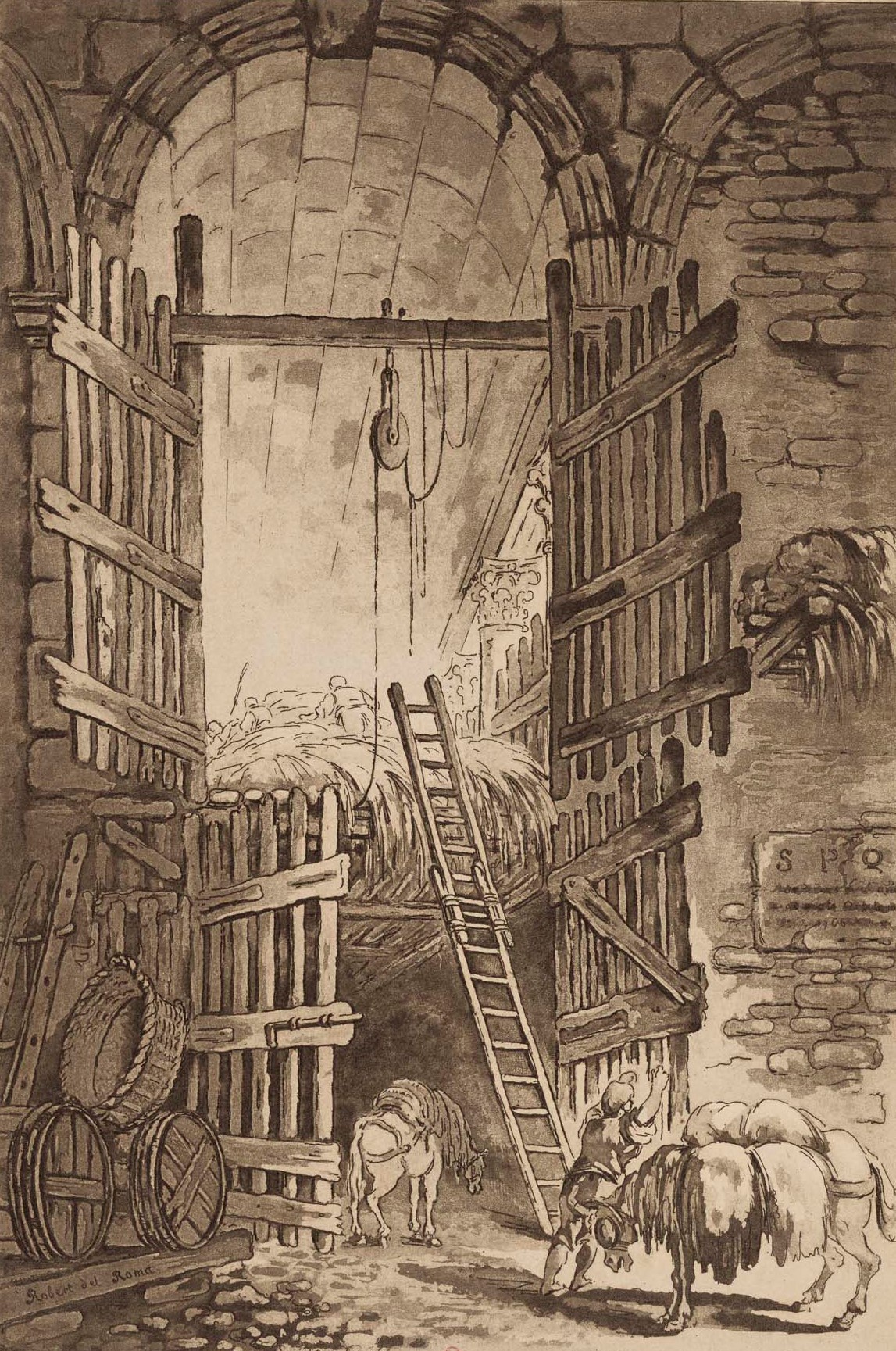DRAWN FOR PRINT
-BOITE-ECU_Ecurie-de-Jules-II-ESTNUM-2021-2862.jpg) Hubert Robert (French, 1733−1808), The Stables at the Villa Giulia, 1766
Hubert Robert (French, 1733−1808), The Stables at the Villa Giulia, 1766 Pen and black ink, brush and brown wash over red and black chalk, 10 7/8 × 7 3/8 in. Bibliothèque nationale de France, Paris, RÉSERVE B-6 (A,22) -BOÎTE ECU
-BOTE-ECU-Vue-de-l-ecurie-du-Pape-Jules-II-ESTNUM-2021-2868.jpg) Jean-Claude Richard, abbé de Saint-Non (French, 1727−1791) after Hubert Robert (1733−1808), The Stables at the Villa Giulia,1766. Aquatint, 10 3/4 x 7 1/4 in. Bibliothèque nationale de France, Paris, RÉSERVE B-6 (A, 22) -BOÎTE ECU
Jean-Claude Richard, abbé de Saint-Non (French, 1727−1791) after Hubert Robert (1733−1808), The Stables at the Villa Giulia,1766. Aquatint, 10 3/4 x 7 1/4 in. Bibliothèque nationale de France, Paris, RÉSERVE B-6 (A, 22) -BOÎTE ECUIn the eighteenth century, drawings frequently functioned as models for prints that enjoyed wide circulation. Because printmaking was a highly specialized art, in some ways more akin to metalwork, artists often did not translate their designs into print themselves but rather entrusted them to trained professionals. Prints derived from drawings might serve as frontispieces or illustrations to printed books; they might also be sold independently or gathered into recueils (collective portfolios or albums) before being offered for sale. During this period, which saw the emergence of new methods of printmaking (such as aquatint), the development of a market for printed reproductions that imitated drawing’s effects went hand in hand with the rise of drawings as a coveted and collectible category of art.
